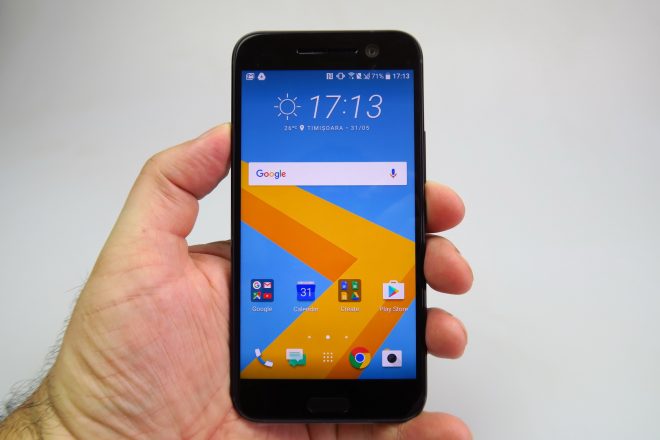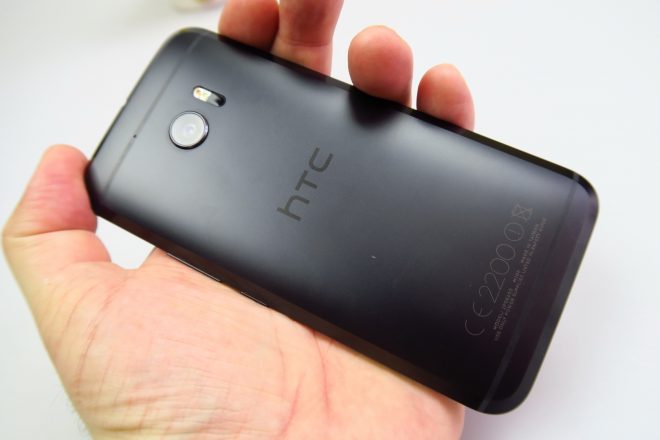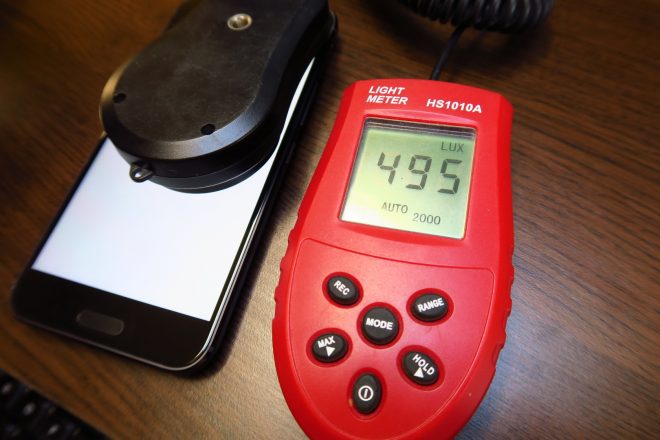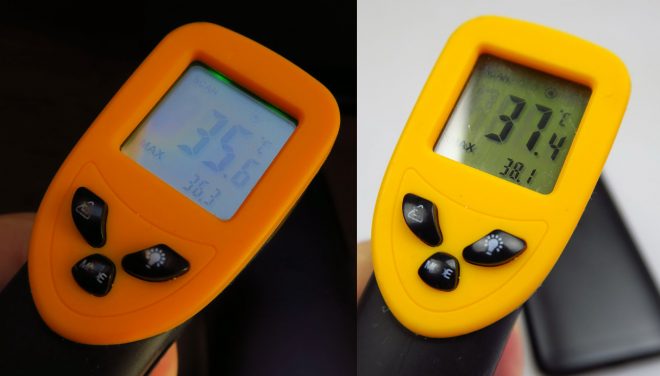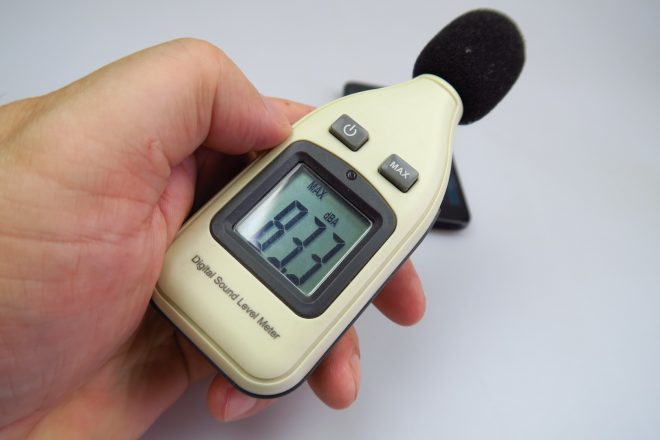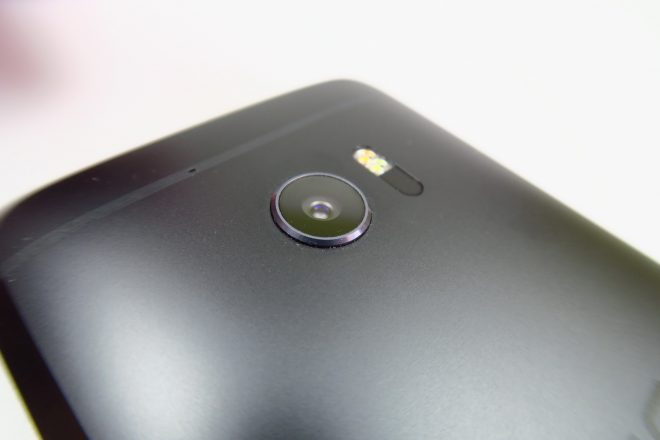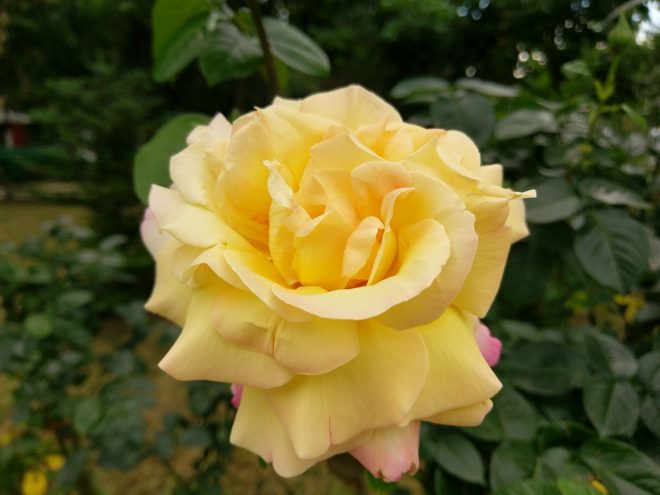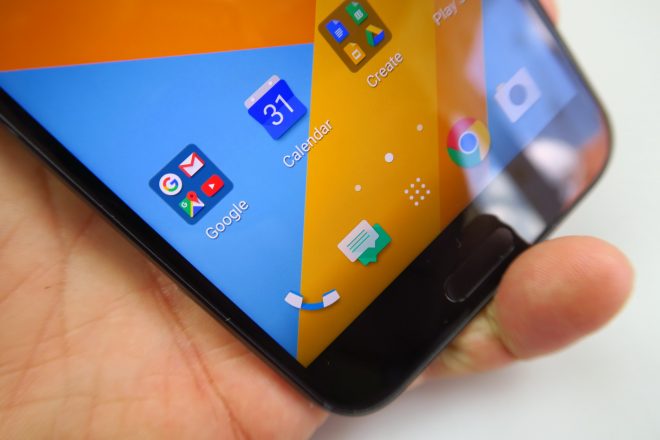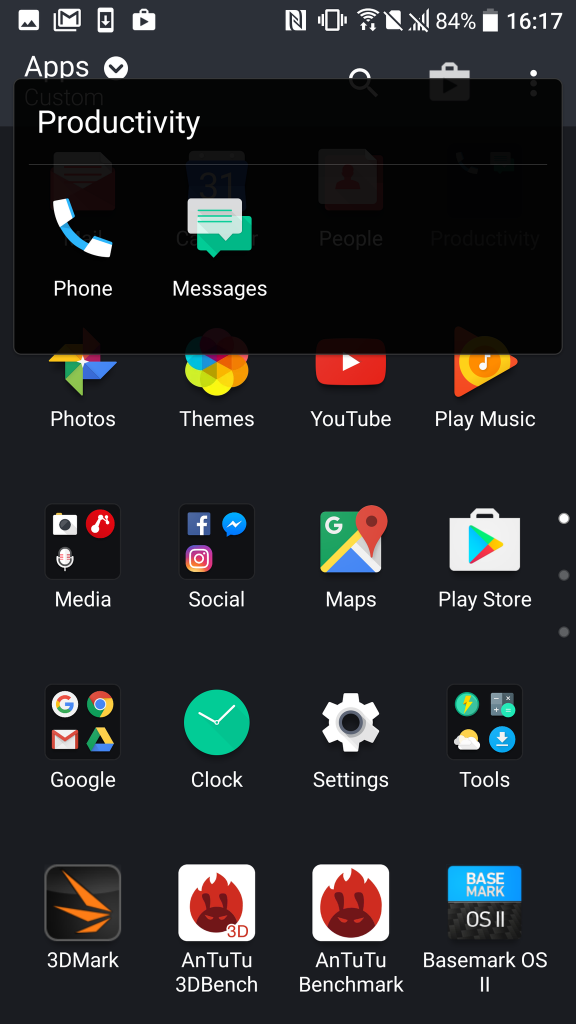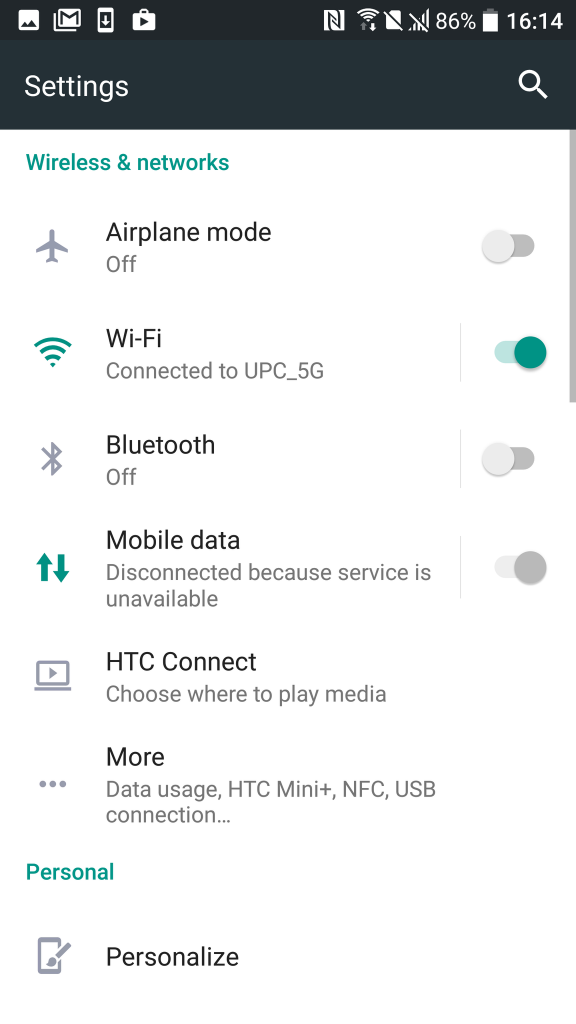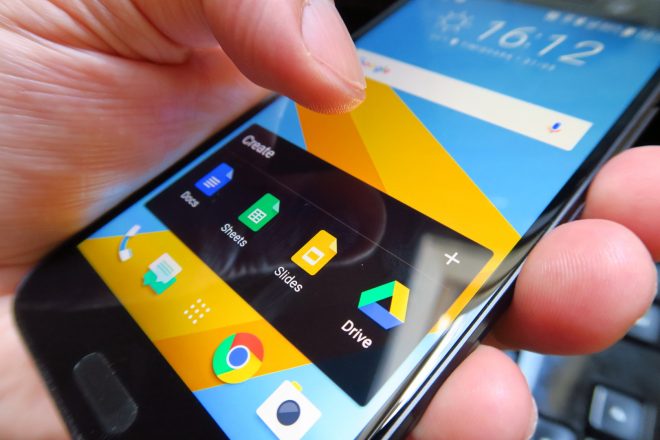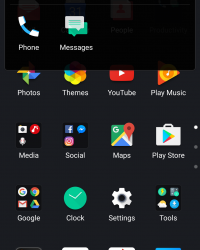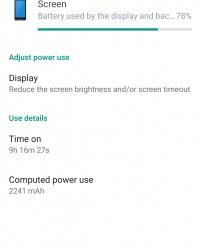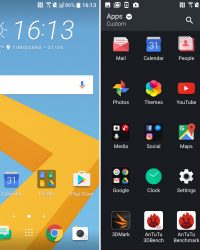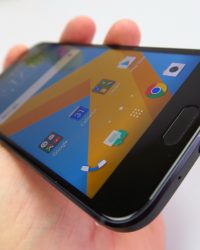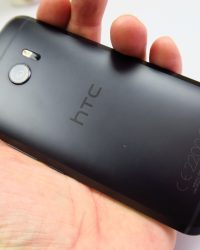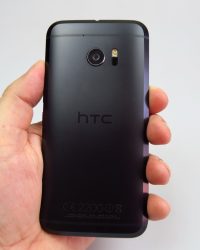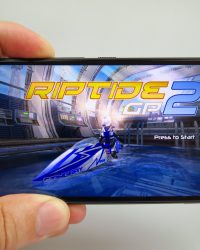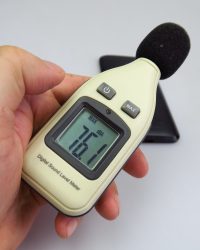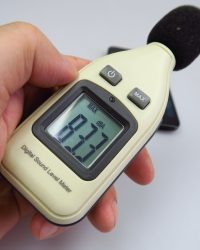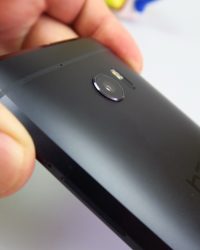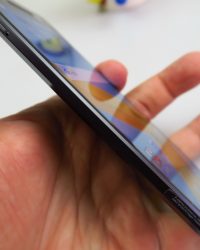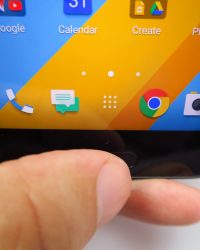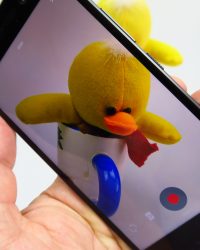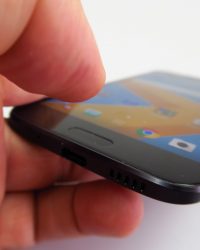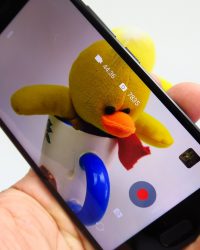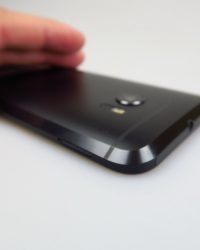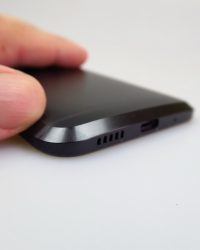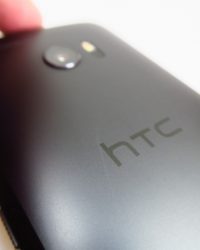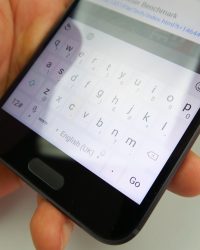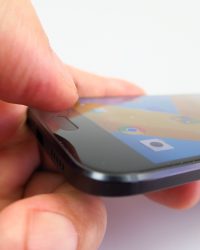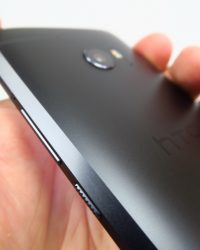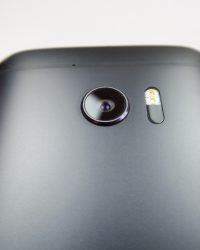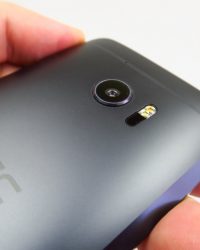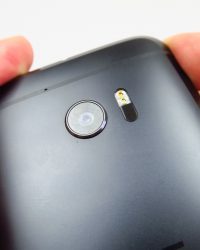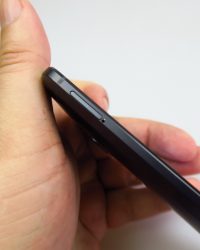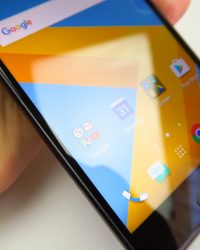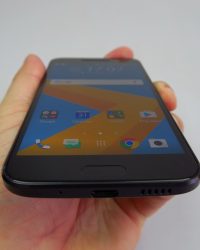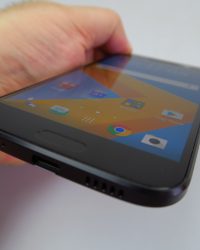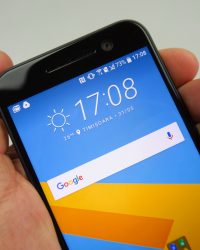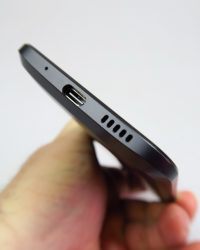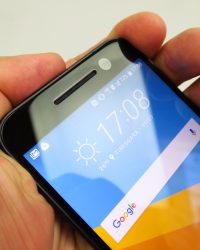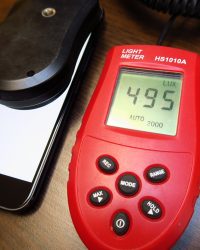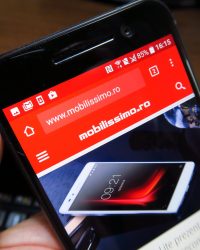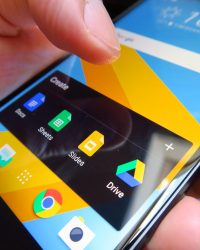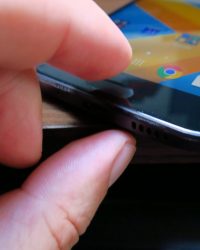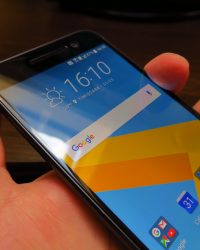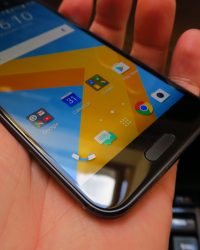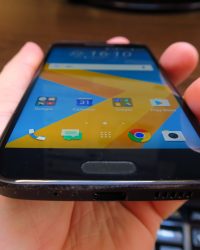Let’s get this out of the way: HTC One M9 was a failure and HTC One A9 was good, but way too expensive when it debuted. HTC 10 washes away the One branding and tries to rewrite HTC’s history, using a reshaped metal flagship. Announced on April 12th, this device was sold from May and it’s priced at around $700.
The design is all metal and the device manages to fit the palm perfectly, since it has excellent ergonomics. It measures 9 mm in thickness, which is less than last year’s M9 waistline of 9.6 mm. It’s also a bit heavier than the predecessor (161 grams versus 157 grams). This model is still thick compared to the Galaxy S7 or LG G5 for example.
In the end it’s a matter of taste and some will like it and some won’t. What’s sure is that the design is solid and we’ve got an angular device here with wide edges and a rounded back. There are chamfered edges to offer the unique look of the device and there are also discrete antenna cutouts. The facade is pretty run of the mill and reminded me a bit of HTC One A9 styling.
The handset has a big top and bottom side, comfy buttons and a ridged power button, for extra comfort. Available in silver or dark gray, the device remains a hit or a miss, depending on your taste. On the hardware front, we start with the 5.2 inch screen, a Super LCD 5 panel with Quad HD resolution and a slightly curved design.
HTC One M9 had a Super LCD 3 Full HD screen, so the evolution is clear. There’s a Gorilla Glass 4 protection here and HTC 10 doesn’t come with a video player, so we had to resort to Google Photos to play videos. The experience of the screen brought a pretty OK brightness, wide angles, realistic colors and it still felt less vivid than an AMOLED.
Blacks are OK and the contrast was more of a so-so affair. Pixels are of the RGB Stripes variety and the luxmeter showed us a value of 495 LUX, which is good and beats the HTC One M9’s 362 LUX, while also being almost the equal of the Huawei P9. We did manage to beat the iPhone and Galaxy S5 for example, but we scored below the Galaxy A 2016 models.
Settings for the screen include Glove Mode, font size, brightness level and something called Colour Profile. This one provides modes like Vivid (warmer to colder) and SRGB (warmer to colder as well). We’ve got Motion Launch gestures and double tap to wake, as well as a variety of swipe gestures to trigger features.
Overall it’s a good display, that certainly beats the one on the LG G5 and it’s below the Galaxy S7. The smartphone relies on the powerful and famous Qualcomm Snapdragon 820 processor, a quad core unit clocked at 2.15 GHz, with an Adreno 530 GPU and 4 GB of RAM in the mix. There’s also 32 or 64 GB of storage, a microSD card slot and the device offers a fluid functioning and no lag whatsoever.
Performance is good and the games run OK, including Riptide GP2. In all the benchmarks, like Quadrant, AnTuTu or 3DMark we scored at top 3 or top 5 level, even after having tested the LG G5, Xiaomi Mi 5 and Galaxy S7. Performance is good, but the LG G5 felt a bit superior in some of the tests. We also tested the temperature after running GFXBench and got up to 36.3 degrees, which means there’s no overheating.
After playing Riptide GP2 for 15 minutes we reached 38.10 degrees Celsius, so there’s also no overheating here. As far as the battery goes, we’ve got a 3000 mAh unit inside, an upgrade from the 2840 mAh one on the HTC One M9. On paper we are promised up to 2 days of normal use and in our HD video playback test, we achieved 9 hours and 16 minutes, which is not very impressive when compared to other models, even modest ones.
We placed below LG AKA and Coolpad Modena, but we beat the OnePlus 2 and Nexus 6P, as well as HTC One M9. In PCMark we did slightly better, with 7 hours and 5 minutes, which is way above the HTC One M9 (4 hours and 57 minutes). There’s only one minute of difference from the Galaxy S6 and we beat the Galaxy S6 Edge. We did score below the Xiaomi Mi 5 for example.
Charging takes 1 hour and 39 minutes, a quite good result and meanwhile the HTC One M9 charged in 2 hours and 20 minutes. We beat the Galaxy Note 4 and LG G4 charging times, as well as Galaxy S7. Settings related to the battery include Battery optimization (basically Doze), Power Saver (conserve CPU usage, reduce brightness and vibration) and Extreme Power Save Mode (use only phone calling, SMS, mail and calendar).
The conclusion is that the battery is superior to the predecessors, but doesn’t records, it’s just good. On the acoustic front, there’s Hi Res Audio (24 bit), Boom Sound technology and a tweeter and woofer. There’s an amp for each speaker here, the top and bottom one. 5 holes are placed at the bottom and the earpiece works as the other speaker.
The upper one provides high and mid level notes, while the one at the bottom offers the bass. There’s no music app here, so we had to resort to Play Music, that lacks an equalizer. The listening experience was loud and clear, we had a good bass and the high notes were excellently rendered. There was no distortion and everything felt right.
Settings only include BoomSound Theater or Music and the decibelmeter we used to measure speaker performance got up to 83.3 dBA, which is just OK, certainly no record breaker. It’s actually below the 86.9 dBA of the HTC One M9 and the result is equal to the Huawei Mate 8’s for example. We also beat the iPhone SE. Headphones are high resolution ones, with aerospace grade polymer diaphragm and 70% oversized drivers.
They’re comfy and possibly the loudest ever pair of headphones I’ve used. They offer great isolation, perfect bass and the Settings include Dolby or you can create your own audio profile. The profile is created by choosing your age, favourite music genre and the level of noise around you. Great acoustics overall, but volume could have been higher.
Time to discuss the cameras! We start off with the 12 megapixel back shooter, with Ultrapixel 2.0 technology and the mention that this is the first phone with OIS for both cameras. HTC One M9 had a 20 megapixel Toshiba camera, that was a letdown, while the HTC 10 goes down to a smaller resolution, but also bigger pixels. This is actually pretty much the same sensor as the one of the LG Nexus 5X and Nexus 6P, but with OIS.
It also replaces F/2.0 aperture with F/1.8, provides dual tone LED flash and measures 1/2.3 inches. We also get laser focus, that sometimes provides a notification that your finger is in the way (quite often). The front camera is a 5 MP unit with F/1.8 aperture, OIS and screen flash, as well as wide angle lens.
The camera app starts up fast, offers fast focus, fluid zoom and provides quick picture taking. The UI is minimal and we have options for timer, aspect, Zoe Camera (picture and 3 second video), Panorama and the Pro mode. That one offers extra options like white balance, exposure, ISO, shutter, focus and RAW capture for example.
Video capture is done with Hi Res Audio as option and 4K or FHD as resolutions. There’s Slow Motion, Hypelapse and then there’s Selfie Photo and Selfie Video options. Grid, geotag, voice capture and auto smile are among options. HDR can be set to on, off and auto and there’s a brightness slider included. As far as the day time shots are concerned, we took them on a very sunny day.
We got a great HDR of a cross, well calibrated colors and excellent closeups. The maximum zoom level brought no quality loss and we registered a nice texture of flowers, as well as nice texture for the same plants. Selfies were OK, but some were foggy. Once again colors are captured perfectly, reminding me of the LG G5 and G4 great colors.
Panorama was rather modest, with a resolution of 8660 x 944 pixels, but rather clear. I liked the green hues and clouds, if I had to highlight anything. I zoomed in a lot into landscape shots, with the result being great details. Brightness, exposure and white balance were great and focus play was nice, in the case of the sprinkler in the park. We had some great closeups and no burnt shots in spite of the sun.
It’s a clear upgrade from the HTC One M9 and about on par with the Nexus 6P, if not better, especially in the area of colors and brightness. This camera does nothing wrong, but somehow doesn’t feel superior to the Galaxy S7 and the LG G5 is still the champ of accurate colors. Low light photo capture registers OK street light halo size, good brightness, no blur and good texture of buildings.
The clarity is great and the flash is… pragmatic. There’s better clarity than the LG G5 and Galaxy S7, that did take some washed out shots. Well, that doesn’t happen with the HTC 10. Night focus was superb and while the margins are fine, the HTC 10 feels superior to the Samsung Galaxy S7, by about 5%. An eye accustomed to fine details and the smallest of grain will sense differences in favour of the HTC model.
On the video front, we shot in MP4 format, in Full HD resolution at 30 FPS and with a 20 Mbps bitrate. 4K capture is done at 55 Mbps. The microphone is great and sadly there are also some flaws here, like flickering colors and focus loss. Those only happened at first, but went away after a few more shots. We got good colors and clarity in general, great zoom quality and the front camera delivered good filming.
4K was perfect and exposure, clarity and colors were spot on. Slow motion and hyperlapse were nice and optical image stabilization was good, but nothing out of the ordinary. There were some focus problem, that I rather associate with my finger in front of the laser focus maybe. This HTC flagship is certainly in top 3 2016 when it comes to video capture, even with those hitches I mentioned.
During the night video was also OK and the microphone and zoom were perfect. What’s clear is that the HTC 10 can do battle with Galaxy S7 and surpasses all iPhones. The web browser of choice here is Chrome, with an OK speed and good browser benchmarks. The keyboard is comfy and on the connectivity front, we got a nano SIM card slot, LTE Category 9 with up to 450 Mbps download, GPS, Glonass and 3 microphones with noise cancelling.
There’s also NFC, Bluetooth 4.2, WiFi 802.11 a/b/g/n/ac, DLNA, Miracast and AirPlay, which is a first for an Android device. There’s also an USB Type C port here and no infrared or FM radio. Calls are clear, but could be louder, the mic is great and SpeedTest showed us a value of 64 Mbps in download and 45 Mbps in upload on Vodafone 4G.
As far as the OS, UI and apps are concerned, this smartphone adopts a simple and minimal approach. HTC got rid of a ton of apps and this model runs Android 6.0 Marshmallow with HTC Sense 8.0 on top. There’s still BlinkFeed in the mix here, as the leftmost homescreen and it offers highlights from your Twitter feed, Google+, news sources, Calendar, Linkedin and mealtime recommendations.
Multitasking is available as a carousel and the dropdown portion includes notifications and Quick Settings, typical for all Android models. If you pinch the homescreen, you’ll access an area of minimalistic widgets. The Sense Home widget is still available here and it includes special apps for home, work and out, each with its own selection of applications, depending on the time of day and GPS placement.
The UI, as usual is based on green and gray hues, it’s now more mature, but also a bit more colourful than over the past years. The app drawer has vertical scrolling and the settings area includes options for the HTC Mini+ remote and personalization options for wallpapers, apps and widgets. You can change a theme with a huge amount of options, including icons, sounds, fonts and edit it as you please.
There’s also a novelty here: there are two types of layout available – classic or freestyle. The latter lets you place stickers and widgets wherever you please, even overlapping them on top of each other. The fingerprint scanner has a pretty long setup, but it’s pretty fast and accurate when it comes to authentication.
We counted the preinstalled apps and got as high as 37, which is an OK number, so not quite bloatware. The list includes Themes, voice recording, Facebook, Instagram, Messenger and a Boost feature, that lets you boost battery in games, clear cache and lock apps. Zoe video editor is here, with the usual filters, music selection and more.
And now here’s the verdict related to the HTC 10 flagship.
Here are the Pros:
- comfy phone
- good display
- top 3 performance
- OK battery
- superb headphones
- good acoustics
- good pictures
- great video capture and low light capture
- perfect microphone
- nice UI customization
And the Cons::
- selfies could be better
- no infrared or FM radio
- bulkier than rivals
- OIS for the front camera is a gimmick
- price huge at debut
- some focus and color problems when filming
HTC 10 stands out of the crowd of flagships through its simple “lack of deal breakers”. LG G5 for example has the battery and display as deal breakers, while the Galaxy S7 has none and neither does the HTC 10. Still, it doesn’t manage to beat the S7 in any area, maybe except for low light capture and headphones. Performance is still great and the UI is youthful, classy and elegant.
One thing’s for sure: this is an upgrade from the HTC One M9, a good one and it’s worth your pennies. Its updated price is here.


